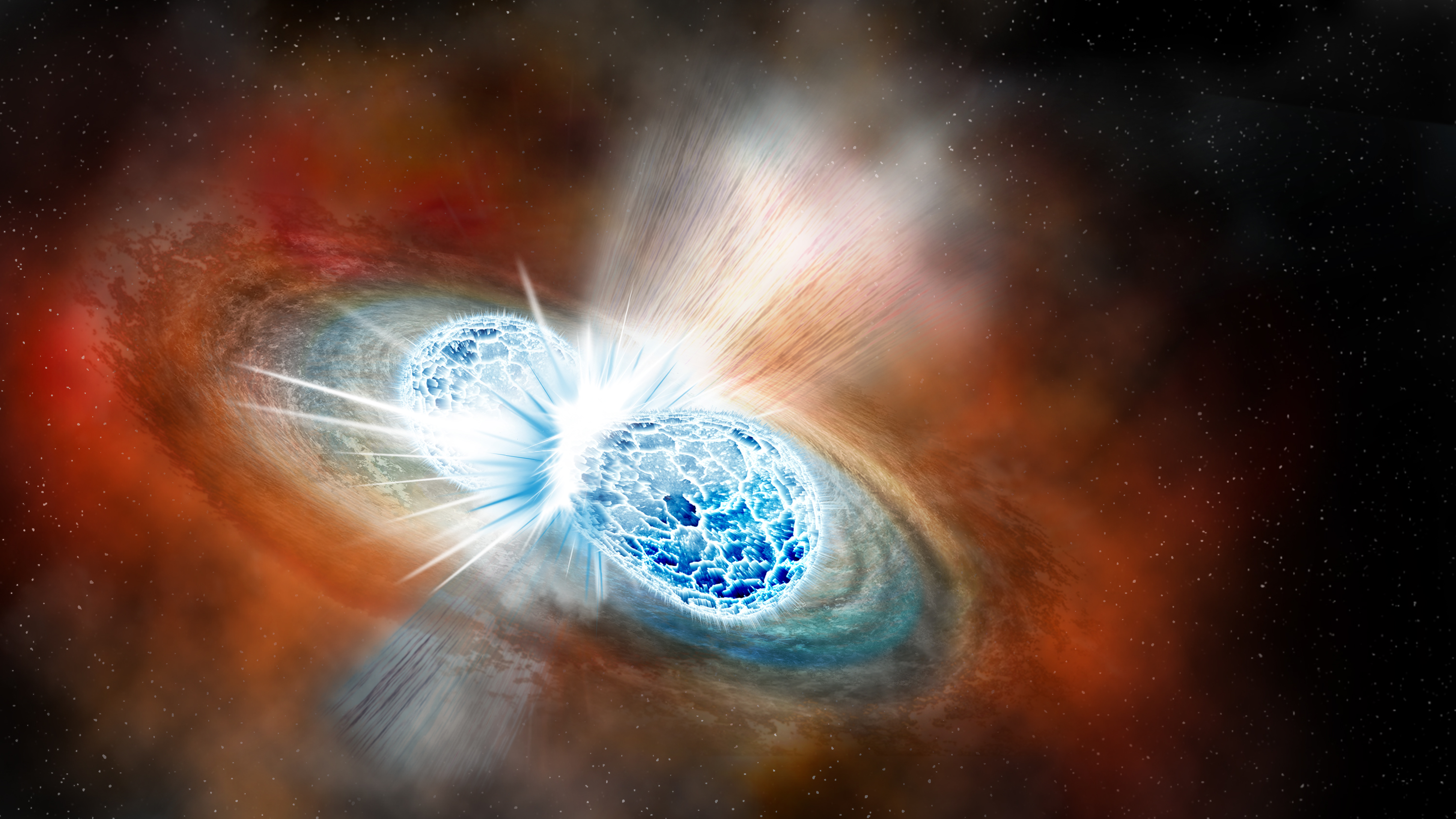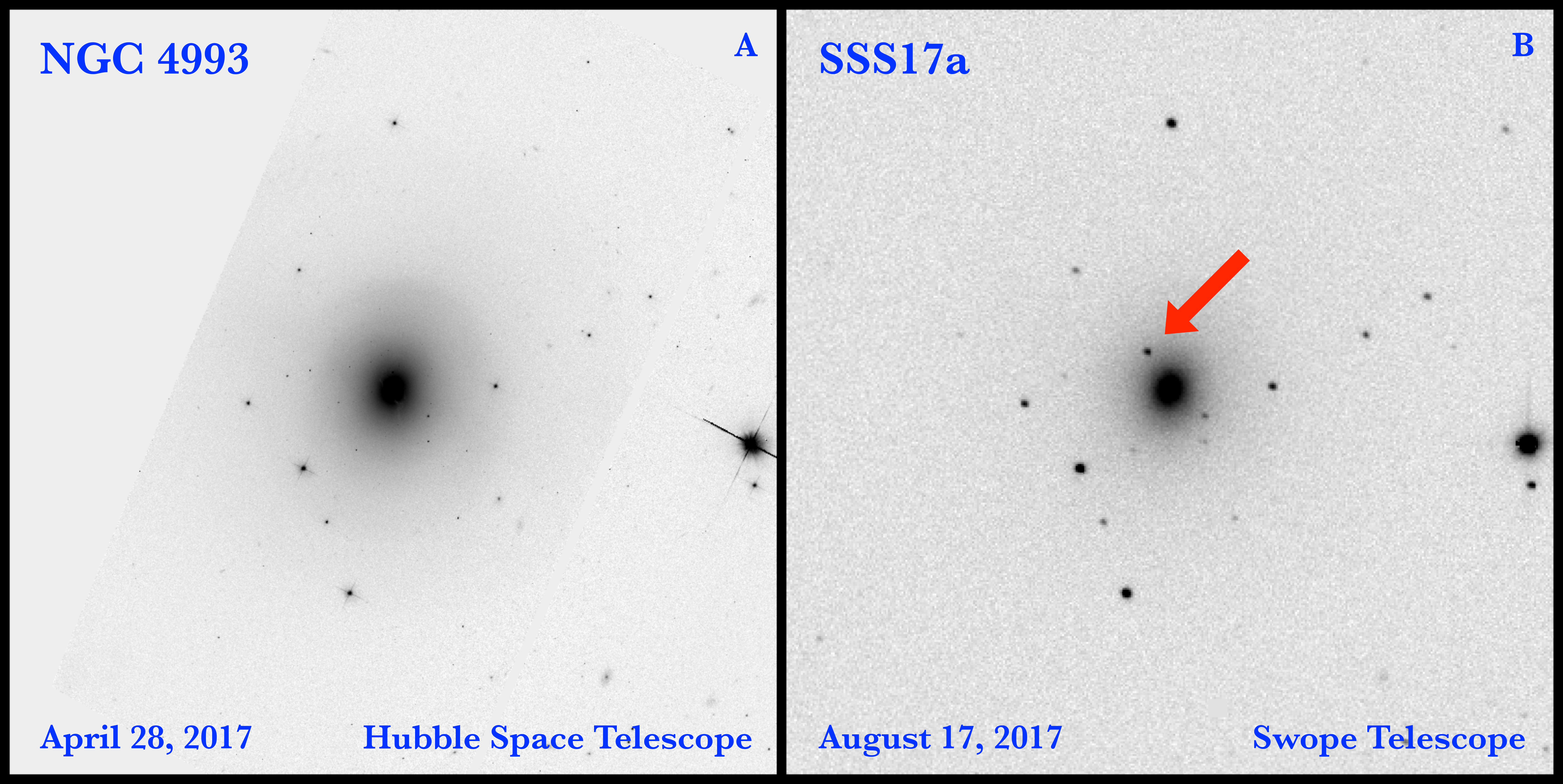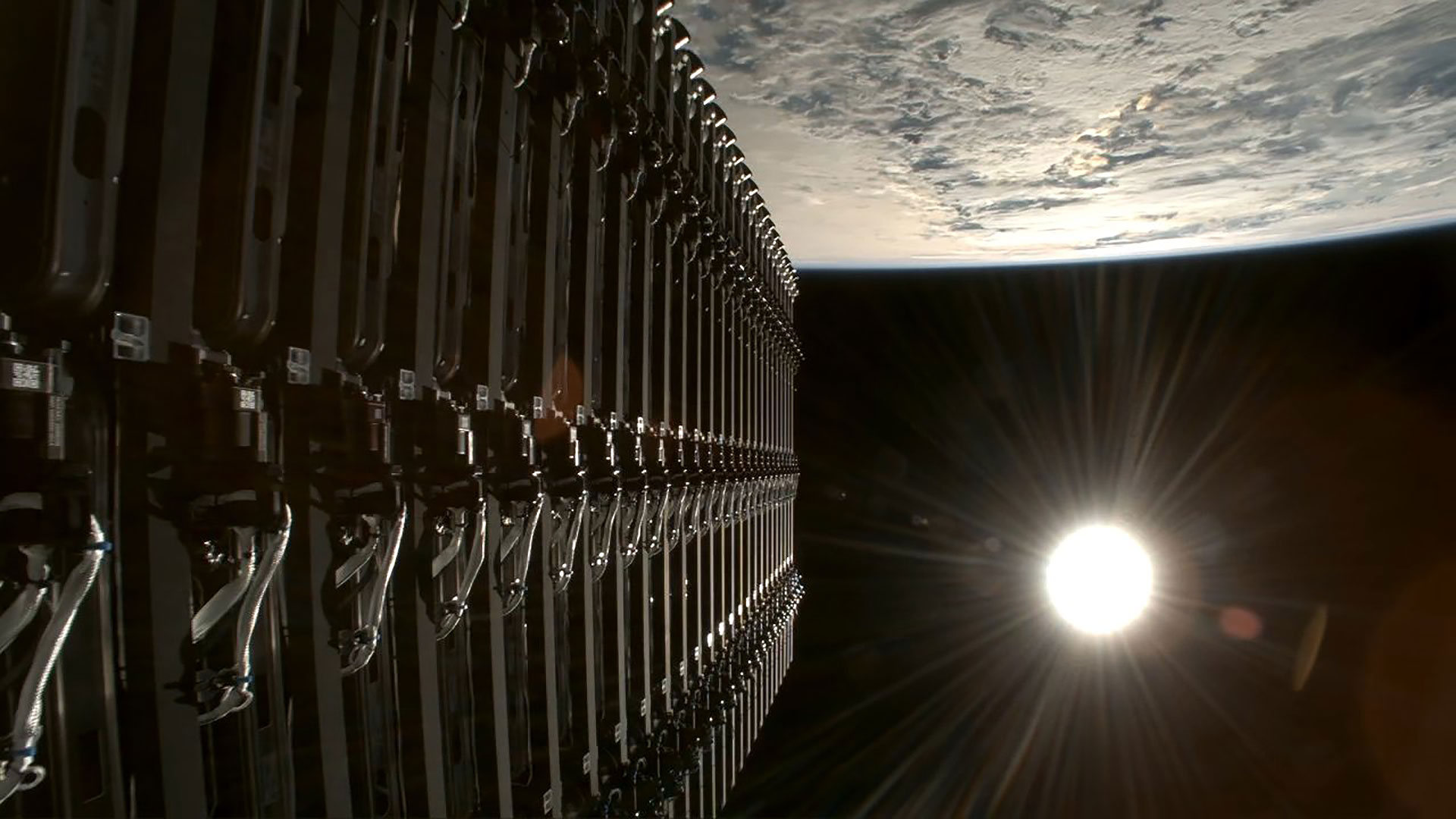First Detection of Gravitational Waves from Neutron-Star Crash Marks New Era of Astronomy
A new era of astronomy has begun.
For the first time ever, scientists have spotted both gravitational waves and light coming from the same cosmic event — in this case, the cataclysmic merger of two superdense stellar corpses known as neutron stars.
The landmark discovery initiates the field of "multimessenger astrophysics," which promises to reveal exciting new insights about the cosmos, researchers said. The find also provides the first solid evidence that neutron-star smashups are the source of much of the universe's gold, platinum and other heavy elements. [Gravitational Waves from Neutron Stars: The Discovery Explained]
How do researchers describe the finding? "Superlatives fail," said Richard O'Shaughnessy, a scientist with the Laser Interferometer Gravitational-wave Observatory (LIGO) project.
"This is a transformation in the way that we're going to do astronomy," O'Shaughnessy, who's based at the Rochester Institute of Technology's Center for Computational Relativity and Gravitation, told Space.com. "It's fantastic."
A new type of detection
Gravitational waves are ripples in the fabric of space-time generated by the acceleration of massive cosmic objects. These ripples move at the speed of light, but they're much more penetrating; they don't get scattered or absorbed the way light does.
Albert Einstein first predicted the existence of gravitational waves in his theory of general relativity, which was published in 1916. But it took a century for astronomers to detect them directly. That milestone came in September 2015, when LIGO saw gravitational waves emitted by two merging black holes. [How Gravitational Waves Work (Infographic)]
Breaking space news, the latest updates on rocket launches, skywatching events and more!
That initial find won three project co-founders the 2017 Nobel Prize in physics. The LIGO team soon followed it up with three other discoveries, all of which also traced back to colliding black holes.
The fifth gravitational-wave detection — which was announced today (Oct. 16) at news conferences around the world, and in a raft of papers in multiple scientific journals — is something altogether new. On Aug. 17, 2017, LIGO's two detectors, which are located in Louisiana and Washington state, picked up a signal that lasted about 100 seconds — far longer than the fraction-of-a-second "chirps" spawned by merging black holes.
"It immediately appeared to us the source was likely to be neutron stars, the other coveted source we were hoping to see — and promising the world we would see," David Shoemaker, a spokesman for the LIGO Scientific Collaboration and a senior research scientist at the Massachusetts Institute of Technology's Kavli Institute for Astrophysics and Space Research, said in a statement. [How to Detect Gravitational Waves: LIGO Simply Explained (Video)]
Indeed, calculations by the LIGO team suggest that each of the colliding objects harbors between 1.1 and 1.6 times the mass of the sun, putting both objects in neutron-star territory in terms of mass. (Each of the merging black holes responsible for the other detected signals contained dozens of solar masses.)
Neutron stars, the collapsed remnants of massive stars that have died in supernova explosions, are some of the most exotic objects in the universe.
"They are as close as you can get to a black hole without actually being a black hole," theoretical astrophysicist Tony Piro, of the Observatories of the Carnegie Institution for Science in Pasadena, California, said in a different statement. "Just one teaspoon of a neutron star weighs as much as all the people on Earth combined."
A team effort
The Virgo gravitational-wave detector near Pisa, Italy, also picked up a signal from the Aug. 17 event, which was dubbed GW170817 (for the date of its occurrence). And NASA's Fermi Gamma-ray Space Telescope spotted a burst of gamma-rays — the highest-energy form of light — at about the same time, coming from the same general location. [A Video Guide to the Discovery]
All of this information allowed researchers to trace the signal's source to a small patch of the southern sky. Discovery team members passed this information on to colleagues around the world, asking them to search that patch with ground- and space-based telescopes.
This teamwork soon bore fruit. Just hours after the gravitational-wave detection, Piro and his colleagues spotted a matching optical light source about 130 million light-years from Earth, using a telescope at Las Campanas Observatory in Chile.
"We saw a bright-blue source of light in a nearby galaxy — the first time the glowing debris from a neutron star merger had ever been observed," team member Josh Simon, also of the Carnegie Observatories, said in a statement. "It was definitely a thrilling moment."
Then, about an hour later, researchers using the Gemini South telescope, also in Chile, spotted that same source in infrared light. Other teams using a variety of instruments soon studied the source across the electromagnetic spectrum, from radio to X-ray wavelengths.
This work revealed that some of the observed light was the radioactive glow of heavy elements such as gold and uranium, which were produced when the two neutron stars collided.
That's a big deal. Scientists already knew the provenance of lighter elements — most hydrogen and helium was generated during the Big Bang, and other elements all the way up to iron are created by nuclear fusion processes inside stars — but the origin of the heavy stuff was not well understood. [The Big Bang to Now: 10 Easy Steps]
"We've shown that the heaviest elements in the periodic table, whose origin was shrouded in mystery until today, are made in the mergers of neutron stars," Edo Berger, of the Harvard-Smithsonian Center for Astrophysics (CfA) in Cambridge, Massachusetts, said in a statement. Berger leads a team that studied the event using the Dark Energy Camera at the Cerro Tololo Inter-American Observatory in Chile.
"Each merger can produce more than an Earth's mass of precious metals like gold and platinum and many of the rare elements found in our cellphones," Berger added.
Indeed, GW170817 likely produced about 10 Earth masses' worth of gold and uranium, researchers said.
Much more to come
The in-depth investigation of GW170817 has revealed other important insights.
For example, this work demonstrated that gravitational waves do indeed move at the speed of light, as theory predicts. (The Fermi space telescope detected the gamma-ray burst just 2 seconds after the gravitational-wave signal ended.) And astronomers now know a little more about neutron stars.
"There are some types of things that neutron stars could be made of that we're sure they're not made of, because they didn't squish that much" during the merger, O'Shaughnessy told Space.com.
But GW170817 is just the beginning. For instance, such "multimessenger" observations provide another way to calibrate distances to celestial objects, said the CfA's Avi Loeb, who also chairs Harvard University's astronomy department.
Such measurements could, in theory, help scientists finally nail down the rate of the universe's expansion. Estimates of this value, known as the Hubble Constant, vary depending on whether they were calculated using observations of supernova explosions or the cosmic microwave background (the ancient light left over from the Big Bang), said Loeb, who was not involved in the newly announced discovery.
"Here's another path that is open that was not available before," he told Space.com.
Many other such paths are likely to open, O'Shaughnessy stressed, and where they may lead is anyone's guess.
"I think probably the most exciting thing of all is really that it's the beginning," O'Shaughnessy said of the new discovery. "It resets the board for what astronomy is going to look like in the years to come, now that we have multiple ways of simultaneously probing a transient and violent universe."
Follow Mike Wall on Twitter @michaeldwall and Google+. Follow us @Spacedotcom, Facebook or Google+. Originally published on Space.com.

Michael Wall is a Senior Space Writer with Space.com and joined the team in 2010. He primarily covers exoplanets, spaceflight and military space, but has been known to dabble in the space art beat. His book about the search for alien life, "Out There," was published on Nov. 13, 2018. Before becoming a science writer, Michael worked as a herpetologist and wildlife biologist. He has a Ph.D. in evolutionary biology from the University of Sydney, Australia, a bachelor's degree from the University of Arizona, and a graduate certificate in science writing from the University of California, Santa Cruz. To find out what his latest project is, you can follow Michael on Twitter.


